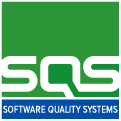The ROI (return on investment) of test automation s a common metric used by teams when automating. But how do you calculate it? Usually, the calculation involves hours saved with respect to manual testing. This calculation is correct, but it provides a very biased view of what to expect.
So how do you calculate the ROI of test automation? Teams should be calculating how well they are adopting automation, as this will allow them to deliver quickly and with higher quality. Therefore, it’s good practice to define and agree upon KPI beforehand instead of calculating ROI. There is plenty of historical evidence and proven success in automation that shows it already has value. Instead, we should track our progress in adopting that value over time—which will lead us to long-term savings!
There are many KPIs that you can use but these 5 are very useful for test automation:
1 Progress Automation. This KPI is important to track the progress of the automation over time. It lets you know how many tests have been automated and how much work remains to be done. This indicator is essential to get a clear idea of how much effort is being invested in test automation and to ensure that you are on track to achieve your goals
2 Percentage of automatable test cases. Not all tests can be automated, and it is not always necessary to automate all tests. This KPI helps identify which tests can be automated and which cannot. By knowing the percentage of automatable test cases, you can prioritize the automation of the most important areas of the system.
3 Equivalent Manual Test Effort. Test automation saves time and resources. This shows you how much time has been saved. It is calculated by comparing the time it would take to perform the tests manually with the time it would take to perform them in an automated way. This KPI is important because it allows you to justify the investment in test automation.
4 Coverage Levels. Collects how much of your codebase is covered by all types of automation. You may discover parts of the software that do not have sufficient test coverage. This indicator allows you to quantify your test automation efforts.
5 Defect Elimination Efficiency. This KPI measures the efficiency of teams in detecting and eliminating defects. It allow to identify the areas of the system that require more attention and to improve the quality of the product. By tracking the efficiency of defect removal, problems can be identified and corrected before they occur in production, which in turn reduces cost and time to repair.








